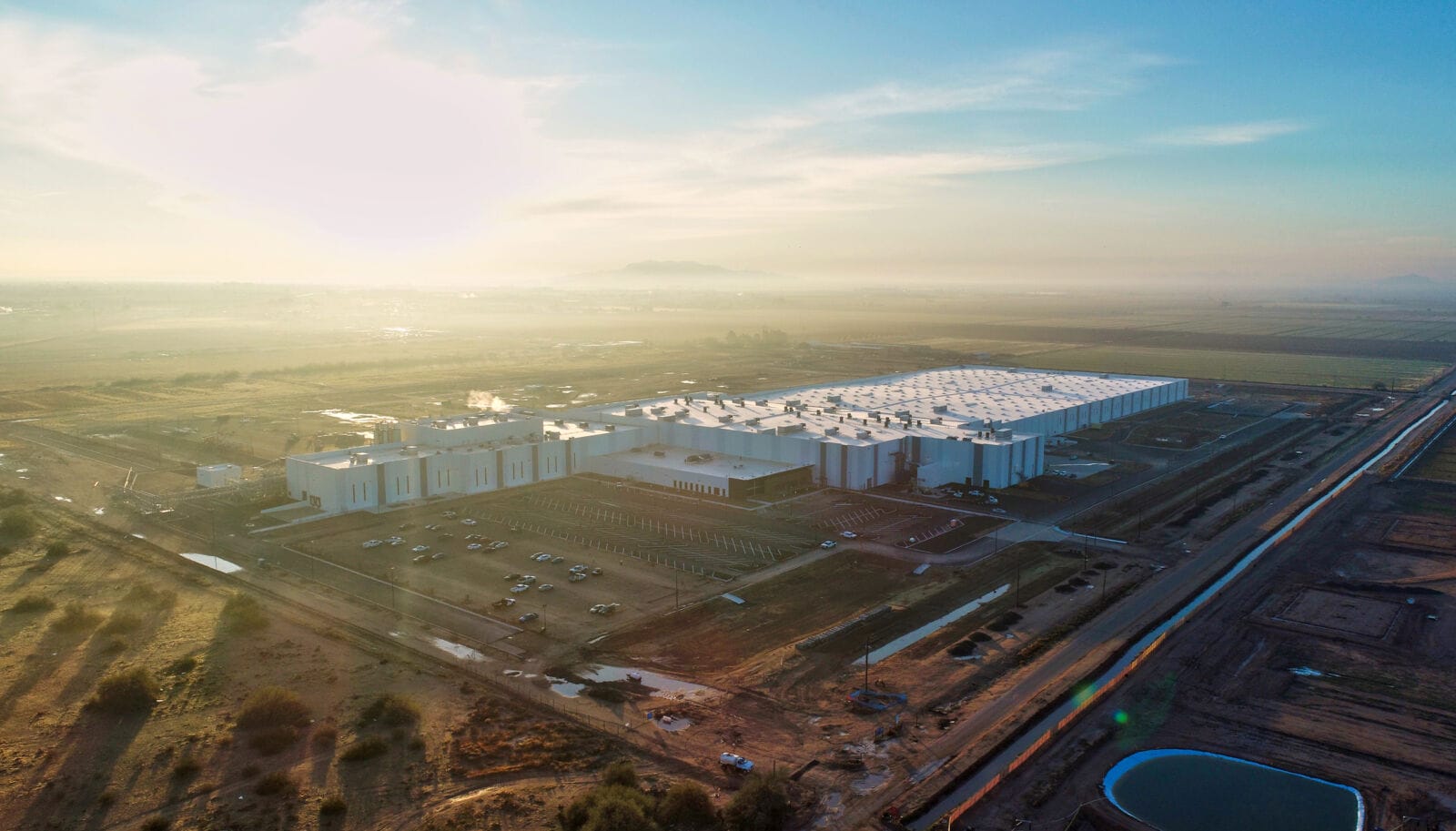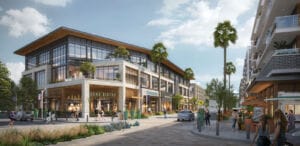In recent years, Pinal County has established itself as one of Arizona’s most productive regions, welcoming a wave of new residents, businesses and major industrial investments while still honoring the region’s rural heritage. From the bustling corridors of Casa Grande and Queen Creek to the transformative projects reshaping Apache Junction and Superior, each community is shaping its own future.
Positioned as the bridge between Phoenix and Tucson, the county has a long history of agriculture, mining and small-town living, but now finds itself as a critical component of Arizona’s economic engine. Proximity to major transportation corridors, including Interstate 10, Interstate 8 and US-60 makes Pinal County well-suited to capture spillover growth from both Phoenix’s East Valley and Tucson’s suburbs.
Prosperity does introduce new problems, and local leaders know that sustainable development requires investments in infrastructure, housing, workforce training and community amenities. This balancing act is happening in every corner of the county, and no two communities are approaching it in the same way.
Strategic approach
Located along Pinal County’s northern border, Apache Junction is best known as the gateway to the Superstition Mountains. In recent years, however, the city has emerged as the fourth fastest growing city in the Metro Phoenix area.
“There will be continual, steady growth as people watch Apache Junction,” says Bryant Powell, city manager of Apache Junction.
This steady growth is fueled by investments in essential infrastructure, which Powell sees as the backbone of the city’s future.
“We’re so excited to see the quality and the level of investment into our infrastructure that’s helping us grow,” Powell says. “Our water, sewer, roads and broadband in the city is elevating our ability to bring quality development, including industrial and commercial.”
In 2023, Apache Junction welcomed new homeowners to two major master-planned communities: Radiance at Superstition Vistas and Blossom Rock. Between the two developments, the city plans for 11,000 new homes to be built by 2033.
Under Arizona state law, projects of this scale are required to have a 100-year water supply for every home. Apache Junction meets this requirement with an assured water supply that provides 100 gallons per person per day for all residents. Water for Superstition Vistas is supplied through groundwater, pumped and treated at the city’s Superstition Area Water Treatment Plant.
READ MORE: Arizona Department of Water Resources sued over groundwater rule
While infrastructure investments are ensuring Apache Junction can sustain its residential expansion, the city’s location is equally important in attracting new residents and businesses seeking proximity to Phoenix without the big-city price tag.
“We’re only a 30-minute drive to Sky Harbor, and a 15-minute drive to Phoenix-Mesa Gateway Airport,” notes Ryan Kaup, economic development director for Apache Junction.
Apache Junction’s approach to growth is methodical, targeting key parcels of land for mixed-use development to ensure that as new neighborhoods take shape, they’re complemented by retail, recreation and essential services.
This focus on balanced growth is already paying off, with more than 1,000 single-family permits issued annually, increasing interest for in-fill multifamily developments and a 7% rise in the city’s population over the past year.
Beyond a bedroom community
Just south of Apache Junction lies Queen Creek, a town that has evolved from a quiet farming enclave to one of Arizona’s most sought-after residential destinations. While much of the town lies within Maricopa County, a small but significant portion is located in Pinal County.
“Queen Creek is seeing activity in all areas, we have very strong residential growth. In calendar year 2024, we issued over 1,500 housing permits,” says Doreen Cott, economic development director for the Town of Queen Creek. “That is creating a need for additional services and amenities, so we see strong commercial development as well, with new shopping centers that are opening.”
Queen Creek’s story doesn’t end with rooftops. The town has become a magnet for major employers, thanks in part to the arrival of LG Energy Solution’s advanced manufacturing facility, a project that has redefined the economic landscape.
“That building is the first of a larger campus,” Cott says. “It is currently under construction and is slated to start production about a year from now.”
This major industrial development has catalyzed interest from LG’s suppliers and other high-tech manufacturers looking to set up shop nearby. For city planners, investments in employers like LG mean more opportunities for residents to work closer to home, boosting the local economy, improving residents’ quality of life and reinforcing Queen Creek’s transformation into a regional employment hub.
Queen Creek’s growth is also visible in its downtown. On May 7, Creation, in partnership with Horizon Real Estate, broke ground on The Switchyard, a $120 million mixed-use development that will bring together popular restaurants, retail, office space and future residential units, establishing Queen Creek’s first walkable, design-driven district.
“It’s a catalyst project for other properties in the downtown,” Cott adds.
This blend of residential, industrial and commercial investment is turning Queen Creek into a powerhouse in Pinal County, and a model for other communities seeking to diversify their economies while maintaining a high quality of life.
Copper country
Near the northeastern edge of Pinal County, Superior — a town of around 2,500 residents deeply rooted in its mining heritage — is charting a course toward modern, diversified growth. Like many small Arizona communities, Superior once relied almost exclusively on mining to fuel its economy. Today, mining is still a driving force, but Superior’s also becoming a magnet for new investment and opportunity.
“Superior has the Resolution Copper project, which, on its own, stands on some pretty strong merits of development for our community,” says Superior Mayor Mila Besich.
Resolution Copper is projected to supply 25% of North America’s copper demand, a critical resource in renewable energy and electric vehicle production. While copper will be a cornerstone of the community, the town is also focusing on strategic land acquisition to build for the future.
“In the next year, we will be purchasing 546 acres of land from the federal government,” Besich explains. “That will allow us to expand our industrial park and finally own our municipal airport.”
Currently, Superior’s airport is a dirt strip with minimal operations, but the town envisions it as part of a future e-commerce and innovation district that will attract new investment.
Superior’s ongoing transformation is visible now in its renewed focus on tourism and its emerging role as a home for small businesses and entrepreneurs. With the Boyce Thompson Arboretum drawing around 150,000 visitors a year, Superior’s downtown is increasingly bustling with shops, restaurants and cultural attractions.
This blend of mining investment, strategic land planning, and tourism development is reshaping Superior into a resilient community that honors its legacy while welcoming new economic opportunities. With its unique blend of natural beauty, mineral wealth and small-town charm, Superior is set to become a model for rural communities navigating the challenges of change.
Workforce powerhouse
Bordering the southern edge of the East Valley, the City of Maricopa is laying the groundwork for a booming future. While Maricopa’s residential growth has been impressive — boasting some of the most affordable housing in the region — the community is shifting its focus to strategic investments in infrastructure and strong partnerships that support its vision for sustainable development.
“We’re working very closely with ADOT and other agencies to improve the Highway 347 corridor, which is our main artery connecting Maricopa to the Phoenix metro area,” explains Christian Price, economic growth officer for the City of Maricopa. “When you have more people, you need additional infrastructure.”
Beyond the highways, Maricopa has invested in expanding roadways and essential services to connect new residents and businesses to the support they need.
A key aspect to Maricopa’s future growth is the city’s dedication to workforce development and its close collaboration with the local school district and Central Arizona College. By aligning training programs with employers’ needs, Maricopa is preparing a local labor pool that can support incoming businesses and help residents stay employed close to home.
Price points to the successful collaboration between Lucid Motors and the City of Casa Grande, noting “that’s the same thing we’re setting up here.”
As for housing, Maricopa’s ample stock of pre-approved lots and affordable developments make it an attractive location for new residents — underscoring the city’s ability to grow without the growing pains some neighboring communities face.
A diversified economy
The City of Casa Grande, located southeast of Maricopa, is in the middle of an unprecedented industrial boom. Long known as the half-way stop for travelers on I-10 between Phoenix and Tucson, Casa Grande is capitalizing on its advantageous position to draw in substantial industrial investments.
In the past five years the city has seen numerous large-scale manufacturers decide to make Casa Grande home. A few of these key manufacturing players include Kohler, Procter & Gamble and Lucid. Between just these three projects Casa Grande has generated nearly $2.8 billion in capital investments and created more than 7,000 jobs.
“Chang Chun (Arizona) is a semiconductor supplier. They’re making great strides in their construction,” says Richard Wilkie, economic development director for the City of Casa Grande.
Chang Chun Arizona is just one of the semiconductor-related businesses looking to set up shop in Casa Grande, including others such as NRS Logios, KPCT Advanced Chemicals, Solvay and LCY Chemical.
“It’s a tremendous benefit,” Wilkie continues. “For a long time, many of our residents have had to commute into the Valley for work.”
Like other Pinal County cities, Casa Grande faces challenges in managing its expansion. Infrastructure investments, from wastewater treatment facilities to new roads, are key to maintaining quality of life while supporting the needs of industry.
“There are some growing pains, but we’re learning as we go,” Wilkie says. “But we’ll continue to attract these innovative companies that will help diversify our economy in a more sustainable way.”
A bright future for Pinal County
From the mining lands of Superior to the industrial corridors of Casa Grande, Pinal County is undergoing a transformation that leaders are hopeful will redefine its role in Arizona’s economy. Each community has its own history and challenge, but all of Pinal County shares a common goal: to build vibrant, sustainable communities where residents can live, work and thrive. Thanks to strategic planning, investments in infrastructure and a commitment to economic diversification, the region’s leaders are laying the foundation for success.




